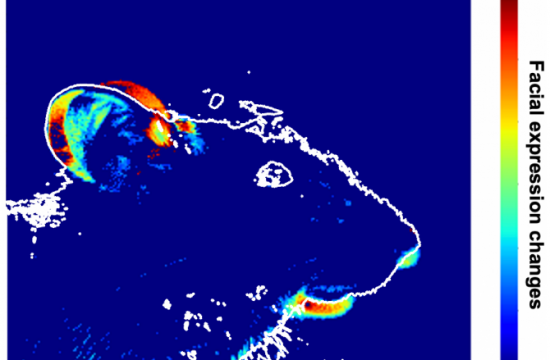 HOUSTON – On Feb. 26, a picture of a cocktail dress originally uploaded to the blog Tumblr swept the Internet and managed to divide the population over a simple question: What color is #TheDress? Some viewers saw gold and white while others insisted the dress is blue and black. Some people claimed they could see either interpretation, but only one of them at a time. It made people stop and ask, “What exactly is going on with this image?”
HOUSTON – On Feb. 26, a picture of a cocktail dress originally uploaded to the blog Tumblr swept the Internet and managed to divide the population over a simple question: What color is #TheDress? Some viewers saw gold and white while others insisted the dress is blue and black. Some people claimed they could see either interpretation, but only one of them at a time. It made people stop and ask, “What exactly is going on with this image?”
James Pomerantz, a professor of psychology at Rice University and an expert on visual perception, said the phenomenon is rather elementary and can be easily explained.
“A couple of things are going on, and not all of them involve how our eyes and brains see color,” Pomerantz said. “As people who have studied visual perception or photography or painting know, there is a problem that eyes and cameras struggle with called “white balance.” If you look at your camera closely, there may even be a white-balance control on it that makes this setting for you.”
 Pomerantz suggested an example to illustrate the point: Think about taking two photographs, one of a white room illuminated with red light bulbs and one of a red room illuminated with white light bulbs. “Will the two photographs come out the same, given that the colors (wavelengths of light) entering the lens will be the same in those two cases?” he asked.
Pomerantz suggested an example to illustrate the point: Think about taking two photographs, one of a white room illuminated with red light bulbs and one of a red room illuminated with white light bulbs. “Will the two photographs come out the same, given that the colors (wavelengths of light) entering the lens will be the same in those two cases?” he asked.
The answer is yes. “The photos will come out the same. How could they not?” he said. “People, however, can usually see the difference, if there is some clue they can find that tells them the color of the light illuminating the room.”
“As hard as it may be to believe, the checkerboard square (actually a parallelogram at this angle) marked A is identical in brightness to the one marked B, even though B looks far lighter,” Pomerantz said. “The reason we see them as different is that we factor in the obvious shadow being cast by the cylinder, blocking the source of light pouring in from the upper right. Because B is in shadow, we must mentally (albeit unconsciously) correct for it being in the shadow. A camera doesn’t know about any shadow or any cylinder or any light streaming in from the upper right. All the camera knows is the brightness at each point (pixel) in the image, and so the camera sees A and B as identical.
“The checkerboard illusion involves just black and white, but the idea extends to the color of the dress,” he said. “The main point is that we can’t tell the difference between white and blue, or between black and gold, unless we have some independent information about the wavelengths of light illuminating the dress.”
Pomerantz said what made the photo go viral is that in the absence of information about the source of illumination, people will vary widely on what they guess from questionably accurate sources, like shadows cast on the dress.
“If you put a color meter up to the ‘white’ portion of the dress, you’ll see in the red, green and blue readings that there’s a bit more blue than red or green; in that sense the dress is blue. But it could have been white under blue illumination.”
 Pomerantz said much that has been written about the dress in the last two days has been “silly” or “just plain wrong.”
Pomerantz said much that has been written about the dress in the last two days has been “silly” or “just plain wrong.”
“What’s correct is that the dress itself, which is for sale online, is actually blue,” he said. “That means that the lighting under which the photograph was taken must have been a fairly good white – that is, an even mixture of all wavelengths or colors — and thus a flat spectrum.”
Pomerantz noted that the other big factor in play is “the oversize emotional reaction” the picture has drawn from people on the Internet.
“Of course, overreaction is a hallmark feature of the Internet, so we should not find that part too surprising,” he said.
Pomerantz, who received a Bachelor of Arts degree in psychology from the University of Michigan and a Ph.D. in psychology from Yale, conducts research focusing on human visual perception with an emphasis on the perception of form and of structure in visual patterns, Gestalt psychology and the role of attention in perceptual organization. He has also published on motion perception, color perception, texture perception, visual imagery and theoretical approaches to perception. Pomerantz is a fellow of the American Psychological Association, the American Psychological Society and the Society of Experimental Psychologists.








